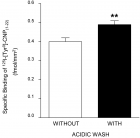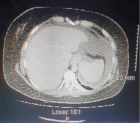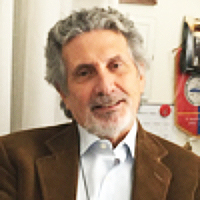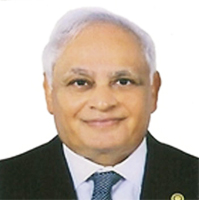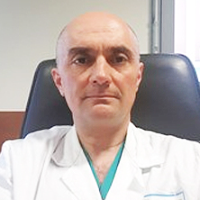About All India Institute of Medical Sciences
All India Institute of Medical Sciences
Articles by All India Institute of Medical Sciences
Near Complete Response to 177Lu-PSMA-DKFZ-617 Therapy in a Patient with Metastatic Castration Resistant Prostate Cancer
Published on: 5th November, 2017
OCLC Number/Unique Identifier: 7286424598
Prostate specific membrane antigen, a type II transmembrane protein is an excellent target for the radionuclide therapy in advanced prostate cancer patients due to its high expression in the prostate cancer cells. We present the case of a 69-year old man with advanced metastatic castration resistant prostate cancer. In view of rising serum PSA levels despite hormonal and chemotherapy, we decided to perform a 68Ga-PSMA-HBED-CC PET/CT scan (prostate specific membrane antigen). It revealed intense radiotracer uptake in the prostate, lymph nodes and multiple skeletal sites. Five cycles of 177Lu-PSMA-DKFZ-617 radioligand therapy were administered in the patient followed by an intrim 68Ga-PSMA-HBED-CC PET/CT. Intrim 68Ga-PSMA-HBED-CC PET/CT scan demonstrated a near complete remission of disease with a corresponding decrease in the sPSA levels. During the follow-up duration of 12 months, the patient did not develop haematological, kidney and liver toxicity during the course of treatment and follow-up. 177Lu-PSMA-DKFZ-617 is a promising therapeutic option in metastatic castration resistant prostate cancer (mCRPC) patients.
Andy Gump deformity
Published on: 22nd September, 2017
OCLC Number/Unique Identifier: 7286354685
A 63 year old gentleman presented with ulcer over the lower alveolus for the past 4 months duration. The patient also had pain, loose lower central incisors and occasional bleeding from the ulcer while brushing. On examination an ulceroproliferative growth was seen involving lower alveolus along with adjoining mucosa of the lower lip with mobile central incisors. There was associated bilateral submandibular area lymphadenopathy.
Recurrent Mucoepidermoid Carcinoma of Parotid with Facial Tics - Report of an unusual case
Published on: 16th June, 2017
OCLC Number/Unique Identifier: 7317651487
We report an interesting case of a 21 year old male who presented with recurrent mucoepidermoid carcinoma of parotid with facial nerve involvement as facial tics. Intraoperatively, the tumour was noted to be firm, irregular and adherent to the underlying structures. The patient underwent extended total parotidectomy, division of buccal branch of facial nerve, selective neck dissection with cervical local rotational flap repair and post-operative radiotherapy. This presentation of Mucoepidermoid carcinoma with involvement of facial nerve as facial tics is one of the rare unique reported cases.
Identification, characterization of candida species isolated from cases of vulvovaginal candidiasis along with their antifungal susceptibility by vitek-2 system
Published on: 29th August, 2022
One of the most severe threats to world health is the Candida species. Many non-Candida species are the major cause of vulvovaginal candidiasis (VVC). During the development of VVC, the host environment and Candida vaginal colonization are assumed to be out of balance, and this might be owing to physiological or non-physiological changes. Host-related and behavioral risks have been connected to VVC. Novel antifungal medications with particular molecular targets may be developed with the use of molecular tools in epidemiological research and the study of resistant Candida species. Using the Vitek-2 Antifungal Susceptibility System, this review will explain the many approaches used to identify and characterize Candida species isolated from vulvovaginal candidiasis patients.
A Rare Symptomatic Case of Heterozygous Cerebro-Tendinous Xanthomatosis (CTX) Treated with Urso-Deoxycholic Acid (UDCA): With Mini Review
Published on: 27th May, 2024
Cerebrotendinous Xanthamatosis (CTX) is a rare autosomal recessive disorder caused by a mutation in the CYP27A1 gene leading to impaired metabolism of cholesterol and accumulation of cholestenol and the cholesterol in various tissues such as the brain, eyes, lungs and bones and reduced formation of cheno-deoxycholic acid (CDCA). The clinical presentation is diverse, starting in the early neonatal period and progressing till adulthood unless treated early. A common neurological manifestation is a spino-cerebellar ataxia followed by spastic paraparesis. Tendon xanthoma is a classical finding that usually helps in clinching the diagnosis but may not be present in all cases. Brain MRI also reveals characteristic abnormalities with cerebellar atrophy and hyper-intensities in the dentate nucleus and surrounding cerebellar white matter on T1weighted images. It is a rare cause of treatable ataxia in young individuals. Treatment is by replacement by CDCA or Urso-deoxycholic acid (UDCA). Supplemented with statins these individuals also have premature atherosclerosis causing death due to athero-sclerotic coronary artery disease. Here a rare case of symptomatic heterologous CYP27A1 mutation is reported with syndrome of spino-cerebellar ataxia treated with UDCA.
Severe Alcoholic Hepatitis-optimizing Medical Management: Whether we need a Liver Transplant
Published on: 9th July, 2024
Severe alcoholic hepatitis is an ethical and clinical conundrum, wherein a liver transplant is often recommended. The adequacy of medical treatment versus the risk of recidivism after transplant is often debated. Complete recovery in 26 of 27 patients with severe alcoholic hepatitis was observed, and hence the data was retrospectively analysed.Methods: 27 patients, with severe alcoholic hepatitis, with Maddrey's discriminant function between 59.7 to 165.2 (mean 107.53), from June 2017 to May 2022, were followed up for between 11 months to 6 years. INR ranged from 1.99 to 3.7 (mean 2.709), and bilirubin was between 7.6 to 37.01, (mean 20.859). 8 patients had pre-existing liver cirrhosis. All patients received probiotics, nutritional support, physical rehabilitation, saturated fat (clarified butter/ desi ghee) supplementation, and anti-oxidant support. At 90 days, total bilirubin improved to between 1.0 to 6.8 (mean 2.625). ALT (Alanine Transaminase/ SGPT) ranged from 65 to 550 (mean ALT – 197); and AST (Aspartate Transaminase / SGOT) ranged from 58 to 810 (mean AST – 271.51). Both the AST and ALT were near normal after 90 days. One patient died due to bacterial pneumonia and sepsis; the remaining 26 patients made a complete recovery. All patients including those with diagnosed liver cirrhosis, had complete resolution of their ascites, and near-normal liver function. At the last outpatient visit, none had ascites, edema, or encephalopathy, and had normal albumin levels and INR values. Conclusion: Probiotics, nutrition, a saturated fat diet, and exercise; all have shown benefits in patients with severe alcoholic hepatitis when tested individually. Concomitant use of all the above has not been reported in the treatment of alcoholic hepatitis. The role of nutrition alone versus the contribution of nutritional deficiencies and the role of gut-derived endotoxemia need to be studied in detail. How to identify patients who need a transplant, if it is needed at all, remains a challenge.
Analyzing Maternal Inheritance of Mitochondrial DNA using PCR-RFLP
Published on: 12th May, 2025
Background & objectives: Mitochondrial DNA (mtDNA) contains valuable genetic information and plays a crucial role in missing person investigations, mass disasters, and forensic cases involving limited or degraded biological material. mtDNA is maternally inherited, with a highly variable control region divided into three hypervariable regions are generally used for forensic investigation. This study aimed to evaluate maternal inheritance patterns of mtDNA using PCR-RFLP techniques to confirm maternal relatedness. Method: The study was designed after prior permission from the institute’s ethical committee in which subjects were enrolled. This pilot study analyzed 50 voluntary participants (mother-child pairs). DNA was extracted from blood or saliva, and the mtDNA hypervariable region (HV region) was amplified by PCR using specific primers for the HV1 region. The amplified fragments (1024 bp) were subjected to RFLP analysis using seven restriction endonucleases (Alu I, BsuR I (Hae III), Hinf I, HsYF31 (Dde I), Mbo I, Rsa I, and SsPI) to reveal morphotypes. Results: The study identified five morphotypes for Alu I, three for BsuR I (Hae III) and Rsa I, two for Hinf I, and one each for HsYF31 (Dde I), Mbo I, and SsPI. There was minimal genetic polymorphism in the hypervariable region among unrelated individuals, but consistent restriction patterns were observed between mothers and their children in same pair. Conclusion: The findings demonstrate the low genetic polymorphism in the hypervariable region among unrelated individuals and consistent restriction patterns within maternal pairs, underscoring mtDNA's utility in forensic and genealogical applications.

HSPI: We're glad you're here. Please click "create a new Query" if you are a new visitor to our website and need further information from us.
If you are already a member of our network and need to keep track of any developments regarding a question you have already submitted, click "take me to my Query."







